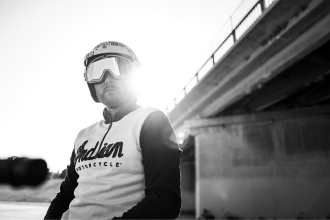We all crave adventure. It makes us feel alive and takes us away from this urban jungle. Lately, mountain biking has become synonymous with adventure riding. The adrenaline rush, feeling alive like never before. Moreover, riding in the mountains is a different feeling in itself. It helps you unwind, rejuvenate, and break monotony from your routine.
However, the presence of the right aid is always helpful in achieving anything in life. Riding in the majestic mountains requires a suitable ride that can support you through thick and thin. Hence, choosing the proper MTB cycle for your escapades becomes paramount. Here are the factors to consider whether you look to buy mountain bikes online or offline.
Can Read More:
1. Bicycle Size
The first and most crucial consideration is the bike’s size. Purchasing a mountain bike, online or offline, is similar to purchasing apparel. Not everyone fits into one size, and your height is a significant factor. Bicycle sizes in demand are small, medium, large, and extra large.
Riders approximately 5’0″ to 5′ 5″ should wear the small size. A rider’s height range for medium-sized mountain bikes is 5’6″ to 5’10”. Extra large bicycles are advised for riders over 6’2″, whereas large bicycles are best for riders between 5’11” and 6’2″. Selecting the appropriate bicycle frame is necessary to provide a comfortable ride. A proper fit can improve pedal efficiency by allowing you to pedal more controllably. Riding a bike that fits well enhances the whole experience.
2. Bicycle Frame
A bicycle’s frame is its central nervous system and contributes significantly to its overall construction and operation. The strength of the frame guarantees durability and long-term dependability. Additionally, you must ensure that the weight is optimal for increasing agility and quickness.
The frame material influences ride qualities. Different riding characteristics are ingrained when different frames are used. Steel frames are known for their durability and smooth riding. Although aluminium frames are lightweight, their ride is comparatively stiffer. Carbon fiber is highly valued for its exceptional ability to attenuate vibrations and is renowned for its lightweight design. Your selection depends on your needs, preferences, and financial situation.
3. Tires
Optimal performance is ensured with the correct size tire. Your sole point of touch with the earth is through them. Maximum grip, excellent performance, and improved riding dynamics are all guaranteed by high-quality tires. Thread is one of the many essential components of tires that influence traction on the surface. While a slim tire allows you to run faster and more agile, a wider tire provides comfort and stability. Treads and tread patterns, or grooves, make up tires. Grip differs depending on the tread. It would help if you chose strong traction and grip tires to navigate off-road terrain and climb steep routes securely.
4. Suspension
For a smoother ride, a suspension helps you absorb shocks and potholes. A well-tuned suspension requires a balance between ride and handling. The suspension on an MTB might be completely adjustable, hardtail, or rigid. However, full suspensions indicate that the tires on the bicycle, both front and rear, have suspensions. A great choice if most of your cycling is on rough, off-road terrain with very steep ascents and descents. A bicycle with a hardtail only has a front suspension. These bikes are great for off-road riding and commuting because they are often lightweight. Like the hardtail suspensions, mountain bikers are new to or intermediate in skill.
5. Brakes
A bike’s brakes are an essential safety component. Its significance is increased with MTB bikes, though. Sharp brakes are necessary when riding on gravel roads and hazardous terrain because there is little room for error. There are disc brakes and drum brakes available. Disc brakes offer enhanced stopping power. With improved braking, you can accelerate around curves faster. Another unique feature of disc brakes is the self-adjustment feature in case of the brake pad wear and tear.
6. Wheel Size
26″, 27.5″, and 29″ inch tire sizes are available. A larger tire size increases your speed. The most widely used tire size is 26″. Comparatively, 27.5″ is best suited for a hardtail or full suspension cycle price in India, while 29″ is the finest option for long-distance riding.
Closing Thoughts
The following parameters help you make an informed decision. Whether you buy uphill or downhill mountain bikes, these will help you start your cycling journey. In addition, when you are looking to start your mountain riding journey, Cambio Bikes is your one-stop shop for premium mountain bikes. You can buy MTB bikes online from our website for an exquisite riding experience.
FAQs
1. Which MTB brand is the best in India?
Cambio Bikes is among the best MTB brands in India. They offer German-engineered bikes for an affordable price.
2. Which cycle is best for the mountain?
Mountain bikes are best for mountains. They offer robust frames, superior suspension, and wide tires for riding in off-road conditions.
3. What is a downhill mountain bike?
Downhill mountain bikes are designed for steep, rugged, or technical terrain. They are equipped with full suspension, robust frames, and knobby tires.
4. Can you use a mountain bike to go downhill?
Yes, downhill mountain bikes are only a type of mountain bike. They are instrumental in handling technical terrain when riding downhill.







